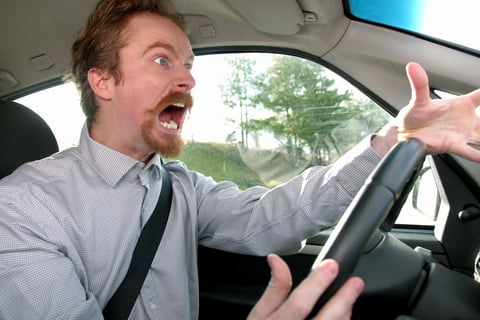Check-out our Defensive Driving Program
Research has shown that human factors play a contributory role in 95% of crashes and were the sole cause of 65% of crashes. Safe or low risk defensive driving should not be confused with legal driving.
Legal Responsibility: Drivers are required to drive in a manner that maintains safety of their passengers and other road users.
To drive in an irresponsible manner can only result in people being hurt or killed.
Legal driving is defined by the letter of the law. Safe driving is defined as `the absence of unusual manoeuvres and the non-occurrence of a near crash’ e.g. a driver who proceeds on a green light at an intersection but fails to first look right and left is practicing legal but unsafe driving.
The problem with the average driver is that they rely too much on non-events, for example, a driver may continuously drive too close to other vehicles, but because no crash or near crash has occurred, they assume that the risk is low.
A driver’s attitude forms a critical element to road behaviour e.g. life’s experiences (family upbringing, school life, good/bad experience) shape our thinking.
The way we think determines the way we feel, the way we feel determines ourattitude towards our driving and other road users.
- A driver with a good attitude would be one who:
- Manages the risks and is always prepared for the unexpected;
- Ensure the vehicle is driven in a safe and courteous manner, obeying road rules;
- Ensuring your vehicle is maintained in a safe and roadworthy condition;
- Does not demand their rights;
- Acknowledges a courteous act by another driver;
- Uses hand signals to assist a confusing situation;
- Is tolerant of other driver’s mistakes;
- Does not become upset or agitated when wronged by another driver (road rage); and
- Drives the vehicle to reduce fuel consumption, exhaust fumes and maintenance costs.
Attitude is our approach to driving which is demonstrated by our driving behaviour. How do we change driver attitude?
- Humans are motivated to maintain consistency between their beliefs, attitudes and behaviour:
- Unlike personality, attitudes are expected to change as a function of experience;
- If attitudes reflect behaviour then to change behaviour we should alter our attitude;
- Attitudes or beliefs can be consonant (in line), dissonant (at odds), or not related to each other;
- If dissonant, we experience psychological discomfort;
- We are motivated to reinstate consonance by changing beliefs or behaviour about attitude;
- Emotion is a common component in attitude change. Much of attitude research emphasized the importance of affective or emotion components.
- Emotion works hand-in-hand with the cognitive process, or the way we think, about an issue or situation;
- Whilst attitude change will not happen as an immediate response to training and information, changes can be made over time.
Defensive driving is operating a vehicle in such a manner as to create a low risk to yourself and all other road users
by constantly being aware of the situation around you.

